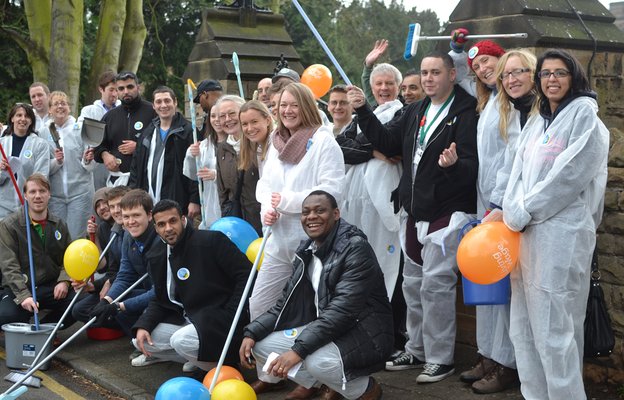
Trust for London is lucky to have a large endowment. Understandably, we sometimes get asked why we aren’t giving out more – or even all of the – money.
The world of philanthropy has seen some bold actions by funders in recent years. In America, Mackenzie Scott (the former wife of Jeff Bezos), decided to give out much of her wealth and do it quickly. In the UK, we’ve seen Lankelly Chase decide to redistribute their wealth to others. These actions, alongside the seemingly endless crises we are going through, are rightly putting the spotlight on funders to act now rather than save wealth for the future.
In this blog, I want to share more about our endowment and how we make decisions about how much funding to give out. I also want to make the argument that we owe it to future generations to not spend all the money now.
Our money came from donations to churches in the City
We were created in 1891 and our endowment comes from donations by the people of London over many years to church parishes in the City of London. These donations were intended to be used for the benefit of the church communities or the poor of those parishes – the latter through direct payments to poor households.
Over time there were less and less poor residents in the City, and the parishes weren’t always using the money as intended. A Royal Commission was setup and recommended the assets be taken from the parishes and a new endowed organisation setup – what is now called Trust for London.
We are in the process of doing more research into the origins of that money and links to the transatlantic trade in enslaved African people. We’ll have more to share on this over the next year once our research is complete.
Our endowment was created to be permanent
Trust for London has a permanent endowment. A permanent endowment is money given to a charity, that the charity must keep rather than spend. Charities are required by the law to invest or maintain those funds so that they create a financial return, which can then be spent on the charity’s mission.
Permanent endowments are created to provide enduring support to a charitable cause. In our case, that’s tackling poverty in London (60% of our funding, that we give out directly) and the promotion of Christian services within the city (40% of our funding which we give back to the church of England – the source of our funds). It’s safe to say that both of these causes are going to be around for a very long time. Because our endowment is permanent, it provides a long-term source of funds to enable organisations and churches in London to do their work.
When deciding how to spend our endowment, charity law requires our trustees to balance the needs of current generations with future generations. We aren’t allowed to spend disproportionate amounts today, leaving less for future needs.
One way to think about this is to put ourselves in the shoes of our trustees at the end of the Second World War. London was in ruins. Many communities lived in slums, with no welfare state to support them. Our trustees could have understandably decided to spend all our resources to help rebuild the city. If they had done so, there wouldn’t have been any funding to support Londoners through future crisis – like the ones we have just faced.
Setting the annual budget whilst balancing current and future needs
Our assets are invested in commercial property in the City of London, and the global stock market. When setting our annual budget, we look at how much our endowment is worth and how much money we are receiving from commercial property rents, and share dividends.
Because of our legal obligation to balance the needs of current generations with future generations, our trustees aim is to maintain the real term value of the endowment – to keep pace with inflation. Anything above that, we are able to spend on our charitable mission. Like many foundations, our target is to achieve a return of inflation + 4%.
In theory, this means we can spend 4% of our endowment value each year, but it doesn’t work like this in practice because we don’t always hit our target. Sometimes we exceed it, and in recent years we’ve failed to hit it because of high levels of inflation and challenging property and financial markets.
We track this using the green line in the middle of the below graph. We have some flexibility but we have to act if the endowment value gets too high (the higher red line) or too low (the bottom red line).
That’s what happened from 2021-2023. The pandemic and cost of living crisis meant we felt compelled to give out more of our endowment. The need was high enough for us to prioritise current beneficiaries over future beneficiaries and our endowment was at the higher red line so we could afford to spend more.
Shortly after, high levels of inflation took their toll on financial markets and high interest rates reduced the value of our commercial property. We’ve now hit the bottom red line and our trustees are compelled to rebalance, by thinking about the needs of future generations. That’s why we’ve had to reduce the amount of funding we give out.

What the future holds
Sadly, we expect this to continue for the next few years as our endowment inches back to the green line. But we are conscious of the impact on the organisations we fund so we will do this gradually. We have also launched our new funding strategy which enables us to be focused and intentional in what we fund ensuring we get the greatest impact even if we are giving out less funding.


